The blip in your simulation makes no sense, but then neither do parts of your circuit:
- R1 and R2 are pointless. What exactly do you think adding 100 Ω in series with a multi-MΩ FET input is supposed to accomplish?
- You are clipping against the opamp's output impedance. A 1N4148 and a theoretical voltage source can probably win against a TL081, but this is still a bad idea. Put some resistance in series with the opamp output but before the clipping diode. That way the opamp can still do what it is intended to do without violating its output current spec. Of course if you're going to do that then what's the point of the voltage follower in the first place?
- You are expecting a TL081 to work down to its negative supply for both the inputs and the output. That's not even close to right as the TL081 needs particularly large headroom. You need to actually read the datasheet.
A more clever way to accomplish this clipping is to put a resistor in series with the opamp output before anything else, including the feedback tap. This way, in the unclipped voltage range, the opamp will drive the left end of the resistor to whatever it takes to get the correct voltage at the right end. This compensates for small offset voltages across the resistor due to load current.
When the voltage enters the clipping range, no output the opamp can produce will cause the right end of the resistor to follow the input voltage. This will cause the opamp output to slam as high as it can go. By sizing the resistor to guarantee the opamp output current is still within spec in this case, no harm is done.
The main drawback to this approach is that the opamp will take some time to respond as the voltage goes lower out of the clipping range again. It might also ring a bit as it transitions out of having its output slammed high and back to linear operation. You might need a small cap immediately between the opamp output and its negative input to keep it stable.
